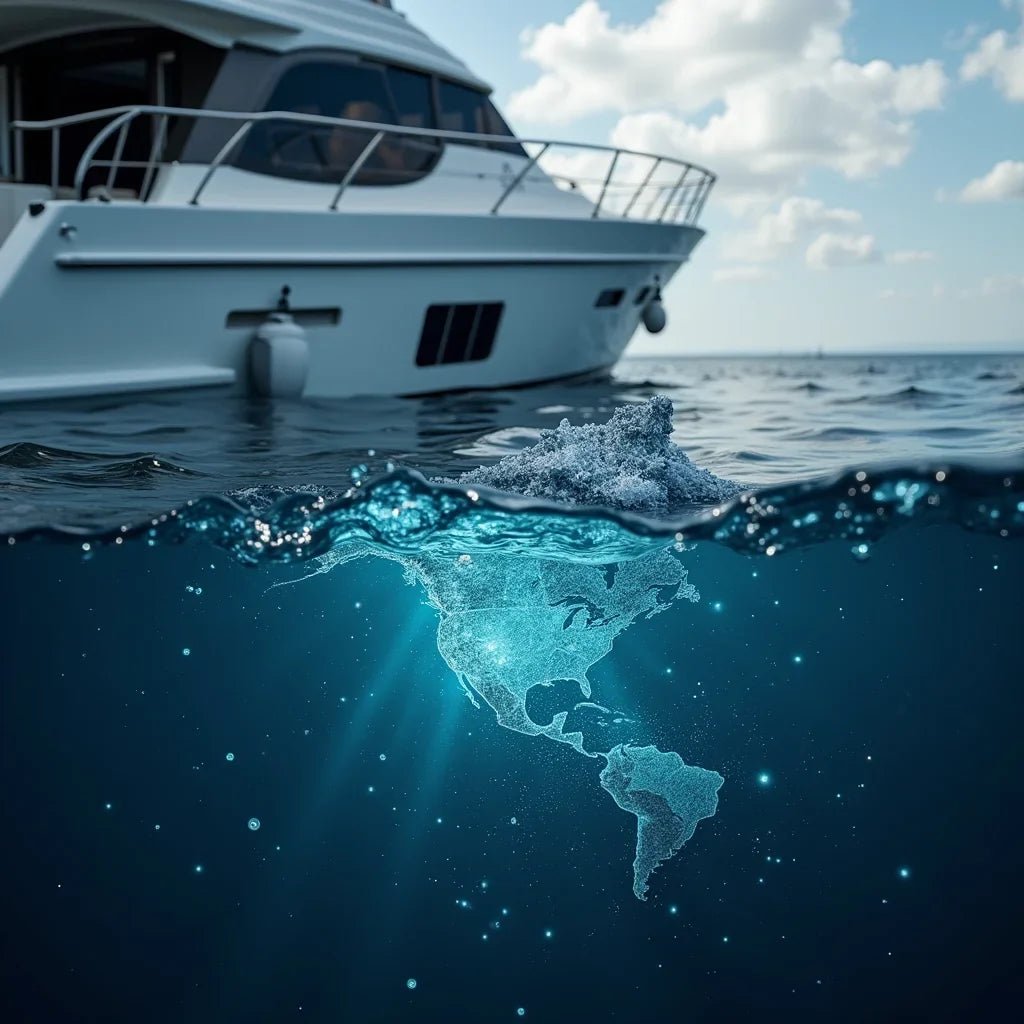Updated on: 2025-09-30
Table of Contents
- Marine electronics essentials for safe, confident boating
- How to choose the right marine electronics for your vessel
- Marine GPS chartplotter and radar: core navigation tools
- Marine electronics myths vs. facts
- A personal note on upgrading marine electronics
- Installation, maintenance, and where to get help
- Best marine electronics for offshore fishing and small boats
- Final thoughts and takeaways on marine electronics
- Marine electronics FAQs
Marine electronics essentials for safe, confident boating
Marine electronics play a central role in safe, enjoyable time on the water. Today’s marine electronics combine precise GPS positioning, clear sonar views, weather data, and near-instant situational awareness in simple, reliable packages. Whether you run a center console for weekend trips or a cruiser that wanders far offshore, the right boat electronics help you navigate, avoid hazards, find fish, and communicate when it matters most. As you shop for marine electronic equipment, it helps to understand the core categories and how they work together.
Most setups revolve around a display—usually a chartplotter—that integrates sonar, cartography, and sometimes radar and autopilot. VHF radios remain the backbone of marine communication. AIS adds traffic awareness and collision avoidance. Radar helps you “see” through darkness and fog. For anglers, advanced sonar and transducers reveal structure and fish with remarkable clarity. The overall goal is a balanced system that fits your vessel and the waters you run.
How to choose the right marine electronics for your vessel
It may feel overwhelming to sort through models, screen sizes, and feature lists. A calm, step-by-step approach keeps this purchase simple. Start with where, how, and how often you boat; then shape your choices around visibility, power, and integration needs.
Assess your boating style and environment
- Nearshore day trips: A capable chartplotter/sonar combo with a reliable VHF may be enough.
- Offshore or overnight runs: Consider marine radar, AIS, and an autopilot integration for longer passages.
- Lakes and rivers: High-quality sonar and mapping of inland waters help with structure and depth changes.
- Fishing-focused use: Look at side-scanning and forward-looking sonar, fast redraw rates, and fine target separation.
Compare key features that matter
- Screen size and brightness: Sunlight-readable displays reduce eye strain and improve safety.
- Networking: NMEA 2000 and Ethernet expandability support radar, AIS, engine data, and more.
- Charts: Ensure your preferred cartography (NOAA, C-MAP, Navionics) is supported and updatable.
- Sonar and transducer pairing: Match power, frequency, and beam type to your fishing depth and water clarity.
- Power draw and space: Confirm your helm layout and electrical system can support new gear.
Step-by-step: selecting marine electronics
- Define your must-haves (navigation, sonar, VHF) and nice-to-haves (radar, AIS, autopilot).
- Set a realistic budget that includes cables, transducers, mounts, and labor.
- Map your helm space and sight lines to choose appropriate screen sizes.
- Plan the network: decide what you want connected today and what you may add later.
- Check warranty, local service options, and software update support.
If you prefer learning from a regional fishing and boating perspective, you may find helpful trip preparation notes on the homepage, which often highlights practical on-the-water insights.
Marine GPS chartplotter and radar: core navigation tools
For many boaters, the foundation is a marine GPS chartplotter. It combines navigation charts with real-time GPS and, often, sonar overlays. Paired with marine radar, it offers a complete picture of your surroundings in daylight, after dark, or in thick fog.
Choosing a marine GPS chartplotter
- Screen size: Larger screens are easier to read in rough water and allow split-screen views.
- Processing speed: Faster redraws during turns and when zooming reduce confusion.
- Integration: Look for easy pairing with radar, AIS, and engine data for a single-pane-of-glass feel.
- Updates: Choose a brand with frequent chart and firmware updates to keep data current.
For anglers, a chartplotter/sonar combo that supports side and down imaging is often ideal. Offshore anglers may favor CHIRP sonar performance and transducers rated for deeper water. If you want a sense of how electronics complement real-world trip planning, an overview like the one in a destination-focused page such as About can provide useful context on water conditions and navigation priorities.
When marine radar makes sense
- Night runs or early departures: Radar helps identify channel markers, shorelines, and large objects.
- Fog-prone areas: Radar can reveal targets when visibility is limited.
- Busy waterways: Tracking moving vessels helps you make courteous, informed decisions.
- Offshore passages: Combine radar with AIS for a stronger safety net.
Compact solid-state radar units are efficient, with fast start-up and good close-range performance. If you often cross shipping lanes or fish in heavy fog, radar is worth serious consideration.
Marine electronics myths vs. facts
- Myth: “A phone app can replace a chartplotter.” Fact: Mobile apps are helpful, but a dedicated chartplotter offers sunlight-readable displays, reliable power, sensor integration, and rugged design built for marine environments.
- Myth: “More power always means better sonar.” Fact: Transducer quality, frequency, beam angle, and processing matter as much as power. Match the system to your target depth and fishing style.
- Myth: “Radar is only for big boats.” Fact: Compact radars fit small craft and can be invaluable for safety during low visibility runs.
- Myth: “All brands network the same way.” Fact: While NMEA 2000 helps, proprietary networking can affect compatibility. Check integration details before you buy.
- Myth: “Installation is plug-and-play.” Fact: Clean power, proper fusing, sensor placement, and waterproof connections are critical to performance and reliability.
A personal note on upgrading marine electronics
During a gradual upgrade on a small center console, the first change was a larger chartplotter/sonar combo. The difference was immediate: safer turns in narrow channels and clearer views of drop-offs. A season later, adding AIS receive improved confidence in busy inlets, especially at dawn. The final step was a modest marine radar unit. It turned out to be the best investment on foggy mornings, when the ability to confirm targets reduced stress and made decisions more thoughtful. This simple, staged plan kept costs manageable and ensured each addition made a real difference.
Installation, maintenance, and where to get help
Good installation is as important as good gear. Many boaters search for “marine electronics installation near me” because clean wiring, correct transducer placement, and sealed connections prevent many future issues. If you prefer to learn locally and ask questions in person, a regional resource or outfitter can be helpful. For example, checking the contact details on a local operator’s page such as Contact may point you toward service pros or schedule-friendly advice.
- Power and grounding: Use tinned marine wire, correct fuse sizes, and solid grounds to avoid noise and drop-outs.
- Transducer mounting: Follow depth and angle guidelines; avoid turbulence and air bubbles.
- Waterproofing: Use drip loops, marine-grade connectors, and proper sealant on deck penetrations.
- Software updates: Schedule updates in the off-season and back up waypoints first.
- Documentation: Label cables and note network topology for easier troubleshooting later.
When you want a quick overview of local waters or trip planning ideas that influence gear choices, a regional article such as a Blog entry can provide context on visibility, bottom contours, and seasonal patterns that affect sonar and mapping needs.
Best marine electronics for offshore fishing and small boats
Best marine electronics for offshore fishing
- Robust chartplotter with fast processor: Smooth redraws and split screens for charts, sonar, and radar.
- High-performance CHIRP sonar + quality transducer: Reliable target separation in deeper water.
- Marine radar: Confidence in low visibility and better collision avoidance.
- AIS receive (or transceiver): Increased awareness around commercial traffic.
- VHF with DSC: Essential communication with position data capability.
What are the essential marine electronics for a small boat?
For compact boats, keep it simple and reliable. A bright, mid-size chartplotter/sonar combo, a fixed-mount or handheld VHF with DSC, and a well-matched transducer often cover the essentials. If you boat at dawn or in fog-prone areas, a small solid-state radar unit can be a smart add-on even for a modest vessel, provided your mounting location and power budget allow it. Organize cables neatly and protect connections to reduce maintenance.
To see how local trip goals can shape a small-boat setup, browsing a trip-focused resource like the home page can give you a sense of how practical navigation and safety priorities come together on the water.
Final thoughts and takeaways on marine electronics
The best marine electronics are the ones you will actually use, in conditions you regularly face. Start with solid navigation and communication—a chartplotter/sonar combo and VHF—then expand thoughtfully with radar, AIS, or advanced sonar as your range grows. Keep installation quality high, plan for software updates, and choose gear that integrates cleanly. With this approach, your boat electronics will feel intuitive and dependable, supporting safer decisions and more relaxed time on the water.
Marine electronics FAQs
How do I choose the right marine electronics for my vessel?
Begin with your boating style: where you go, how far you travel, and the visibility you expect. Match screen size to your helm and eyesight, ensure NMEA 2000 or Ethernet expandability if you plan to add radar or AIS, and confirm your power system can handle the load. Build from a reliable chartplotter/sonar and VHF, then add radar or AIS as your needs evolve.
Do I need marine radar for inshore boating?
Not everyone needs radar, but it is helpful in fog, at night, or in busy waterways. If you often leave or return at dawn, run in low visibility, or cross traffic lanes, a compact radar unit can provide an extra margin of safety.
What maintenance keeps marine electronics reliable?
Protect connections from moisture, secure wiring to avoid chafe, and check fuses and grounds regularly. Update software during the off-season and back up your waypoints. Inspect transducer mounts and clean the face to maintain sonar clarity.
Are there benefits to professional installation?
A professional installer can save time and reduce issues by ensuring clean power, correct network configuration, and proper sensor placement. If you are new to marine wiring or short on time, hiring a pro can be a considerate decision for long-term reliability. If you are looking for local insights or timing guidance, you can reach out through a page such as Contact for region-specific context.

Owner and CEO of Clinch River FIshing USA. A marine electroncs, fishing and outdoor store.

